
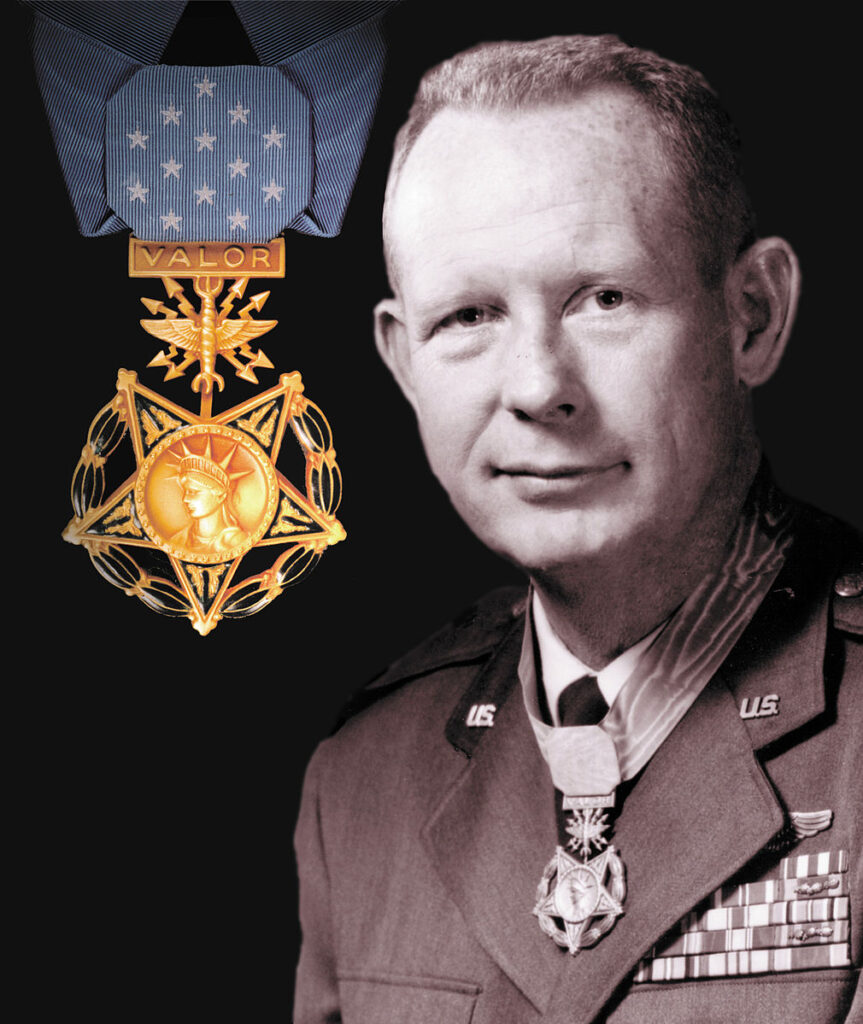
A separate design for a version of the Medal of Honor for the U.S. Air Force was created in 1956, authorized in 1960, and officially adopted on April 14, 1965. Previously, members of the U.S. Army Air Corps, U.S. Army Air Forces, and the U.S. Air Force received the Army version of the medal. The first person to receive the new U.S. Air Force Medal of Honor was Major Bernie Fisher during the Battle of A Shau Valley in March 1966. He also received a Silver Star during the same battle.
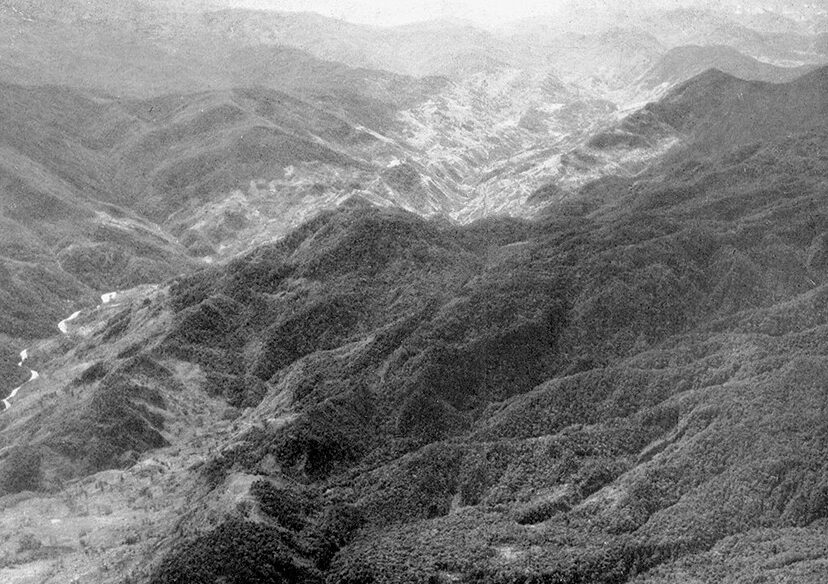
Into the Fierce Battle of A Shau Valley
The A Shau Valley is located in Thua Thein Hue Province, 30 miles southwest of the coastal city of Hue, along the border of Laos. The valley runs north and south for twenty-five miles and is a mile-wide flat bottomland covered with tall elephant grass, flanked by two strings of densely forested mountains that vary from three to six thousand feet. Its geography and isolation made it a primary infiltration route for the North Vietnamese Army (NVA) into South Vietnam for men and material brought down from the north along the Ho Chi Minh Trail.
Located just five miles from the border with Laos was A Shau Special Forces camp with the mission of detecting and interdicting enemy forces. Defending the camp were 10 Green Berets from the 5th Special Forces Group and 210 South Vietnamese Civilian Irregular Defense Group (CIDG). Out of friendly artillery range, it was supported by Air Commando units equipped with vintage A-1 Skyraiders and AC-47 Spooky gunships.
The camp consisted of some barracks buildings, a triangular fort, and an airstrip made of pierced steel planking just outside the barbed wire perimeter east of the camp. The fort had a mortar bunker at each corner. The walls consisted of steel plate and sandbags.
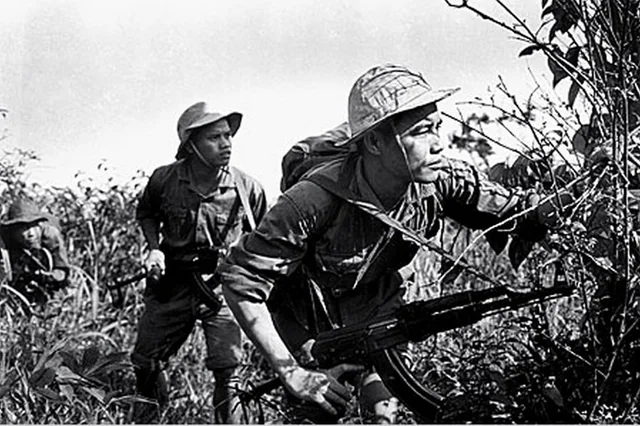
The camp was routinely harassed by small Vietcong (VC) formations leading up to the battle. Throughout February andMarch, 1966, platoon-sized troops from the camp were sent out to conduct reconnaissance patrols in the surrounding area. On March 5, two North Vietnamese Army (NVA) defectors turned up at the camp. Under interrogation, they indicated that four battalions of the North Vietnamese 325th Division were planning to attack the camp.
Based on that information, night patrols were dispatched to confirm the enemy positions but no sightings were made. However, Air Commandos conducting reconnaissance flights observed large build-ups of NVA troops along with anti-aircraft emplacements. As a result, airstrikes were ordered against enemy positions.
On March 7, Air Force C-123s brought in reinforcements in the form of a MIKE force, increasing the strength of the camp to 17 Green Berets and 368 South Vietnamese irregulars and Chinese Nung mercenaries.
On March 8, the camp was placed on general alert and the camp’s defenders had taken up their positions. During the night a small enemy assault was launched but thrown back.
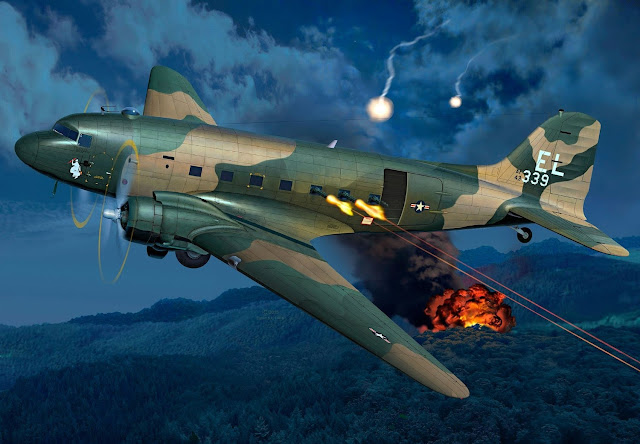
Facing Chaos Amid the Siege at A Shau
Shortly after midnight on March 9, with the cloud ceiling at 400 feet, an Air Force AC-47D “Spooky 70” from the 4th Air Commando Squadron got through the clouds and flew up the valley at treetop level, strafing the attacking NVA formations. On the gunship’s second pass, it was hit hard by ground fire. The right engine was torn from its mounts. Seconds later, the other engine was knocked out, too. The bullet-riddled AC-47 crash-landed on a mountain slope, five miles farther up the valley. All six crewmen survived but were attacked by NVA troops. Three crewmen were killed but the other three were eventually rescued by a U.S. Air Force HH-43 helicopters.
About 2 am, March 9, a second attack began with enemy bombardment emanating from the surrounding hills. Mortars, artillery, and rocket-propelled grenades pounded the camp, killing two Americans and wounding 30. The barrage set buildings and the supply dump afire and reduced defensive positions to rubble. The enemy artillery barrage stopped at dawn.
Bernie Fisher Takes Command in the Skies Over A Shau
Early in the morning of March 9, two A-1Es from Pleiku were diverted from other targets and sent to the aid of the fort at A Shau. Leading the A-1E flight was Air Force Maj. Bernard F. Fisher, a 39-year-old fighter pilot from Kuna, Idaho and a devout Mormon who did not drink, smoke, or use strong language. He had been in the Air Force for 15 years.
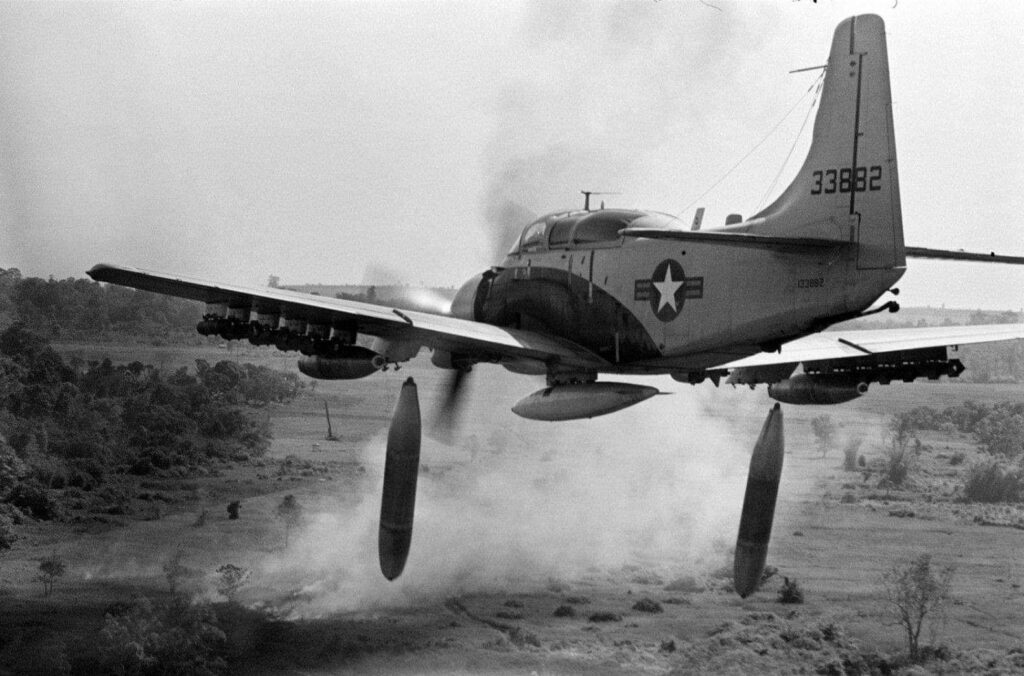
There weren’t many jets in Vietnam in the early part of the war, so Fisher had volunteered to fly the A-1E, which was in use both by the South Vietnamese Air Force and by U.S. Air Commandos. Fisher was initially sent to Bien Hoa, where he trained South Vietnamese pilots to fly combat in the A-1E. He then transferred to the 1st Air Commando Squadron at Pleiku.
Arriving in the area of A Shau Valley, Fisher and his wingman Bruce Wallace found the mountains blanketed by clouds and began probing to find the canyon in which the camp lay.
On his third attempt, he emerged from the overcast and barely missed colliding with a helicopter that had just come from A Shau with wounded aboard. The helicopter pilot directed Fisher toward a saddle in the mountains, where he found an opening in the clouds about five miles northwest of the camp. He and Wallace went through the hole and flew down the valley at very low level. The enemy AAA was intense.
A C-130 airborne command post told Fisher to destroy the crashed AC-47 before the NVA captured the three 7.62 mm Gatling guns, which could fire 6,000 rounds per minute and which were still in working order. Fisher assigned that task to Wallace – who dropped six bombs on the wreckage and obliterated it – while Fisher went to the direct assistance of the fort.
For the next several hours, Fisher and Wallace collected arriving aircraft above the clouds and led them down into the valley. Fisher guided a CH-3C helicopter that came to evacuate the badly wounded. He also led A-1Es in a strike to break up a force that was massing to attack the fort.
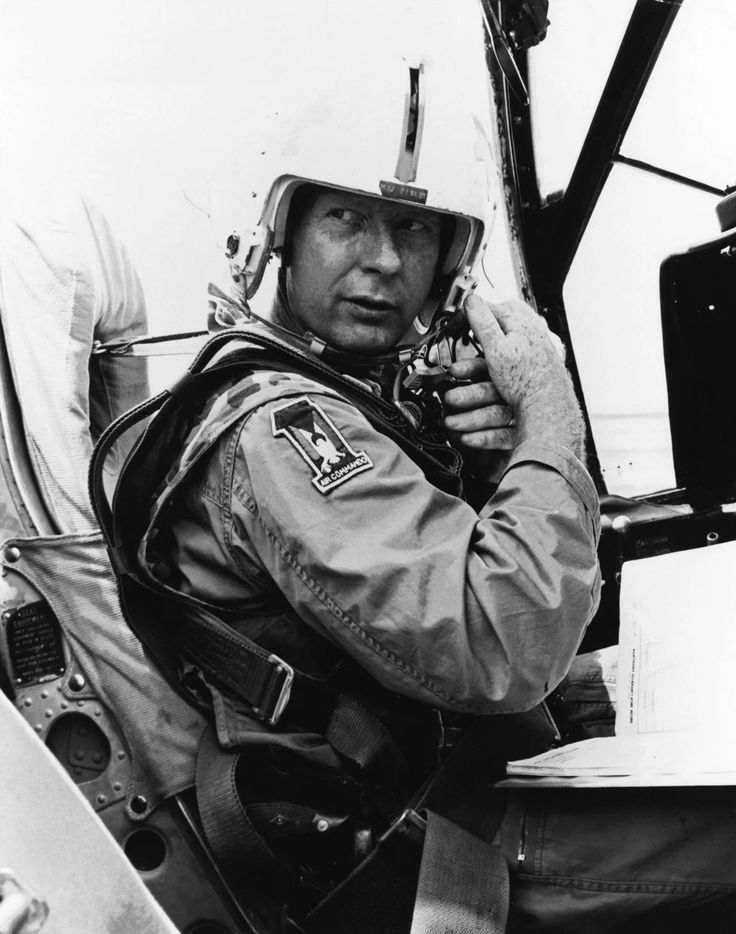
Fisher went up again to bring down two Air Force C-123s. The mountains were tight on all sides, and forward visibility was less than half a mile. They began taking fire seven miles north of the camp. Fisher suppressed the ground fire as the transports air-dropped supplies for the fort from an altitude of 50 feet.
Low on fuel, Fisher went through the clouds one more time to help a forward air controller lead two B-57 bombers down the valley. In all, Fisher spent about two hours under the clouds. He made an emergency landing at Da Nang, 20 minutes away, with almost no fuel left in his tank.
Fisher was awarded the Silver Star for his role as on-scene commander and Wallace received the Distinguished Flying Cross. However, Fisher had not yet seen the last of the A Shau Valley.
Bernie Fisher Returns to A Shau to Save a Downed Pilot
In the afternoon on March 9, supplies of ammunition were flown in by C-123 and CV-2 aircraft, but the resupply drops often landed outside of the camp and could not be retrieved. At the same time, helicopters were called to evacuate the wounded. Because of bad weather, however, reinforcements from Hue and Phu Bai could not be deployed, forcing the camp’s defenders to repair as well as they could their defensive wall and dug in for the night.
Sometime between midnight and 3 AM during the night of March 10, the NVA launched yet another attack with mortar and recoilless rifle fire. Two C-123s and an AC-47 dropped flares throughout the night. Before daylight, an enemy assault team penetrated the east wall of the camp, where hand-to-hand combat took place for three hours. By 8 AM, the defenders were pushed into the camp’s north wall and the NVA dug in between the airstrip and the camp.
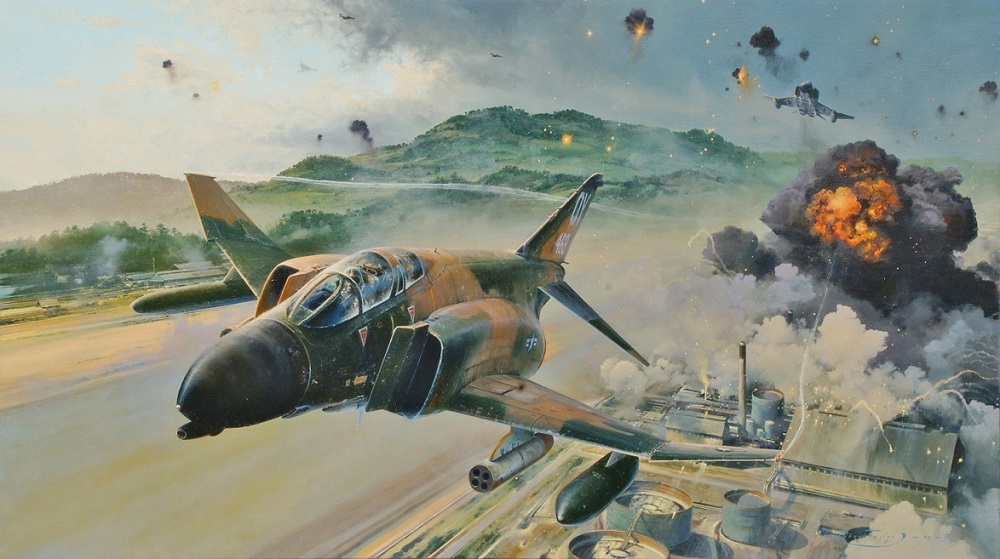
Throughout the day U.S. Marine Corps and Vietnam Air Force (VNAF) aircraft strafed NVA positions around the camp, but as fighting continued the situation deteriorated with ammunition supplies running short.
About 11 AM, the defenders reported that they could hold out no more than another hour and that airdrops to resupply them with ammunition should stop since they could not retrieve the bundles.
Bernie Fisher and his wingman that day, Capt. Francisco “Paco” Vazquez, were en route to provide air support to Army forces near Kontum when they got an emergency radio call to divert to A Shau. Fisher’s call sign was “Hobo 51,” and Vazquez was “Hobo 52.”
By 11:15 AM, Hobo flight had joined numerous other aircraft that were stacked and circling at 8,000 feet and higher above the valley. They had not yet gone to the aid of the fort because of the danger of running into mountain peaks hidden by the cloud cover.
One of the other A-1 flights in the stack was led by Maj. Dafford W. “Jump” Myers from the 602nd Fighter Squadron at Qui Nhon. Myers was “Surf 41,” and his wingman, Capt. Hubert King, was “Surf 42.”
Myers was an old friend. Fisher had known him back in Air Defense Command. He had been nicknamed “Jump” when he was a soda jerk in high school. Myers was a hard-bitten chain-smoker who once made his living running a billiard parlor.
Myers suggested that there might be an opening to the west. Fisher went to see, found a hole, and called on Myers and King to follow him and Vazquez into the valley.
Fisher told the other A-1 flight to stay in orbit above the clouds. There was not enough room in the valley for six airplanes to operate, so Capt. Jon T. “Luke” Lucas (“Hobo 27”) and Capt. Dennis B. Hague (“Hobo 28”) continued to circle.
Fisher, Vazquez, Myers, and King flew down the valley in trail formation. It was too tight to go in side by side.
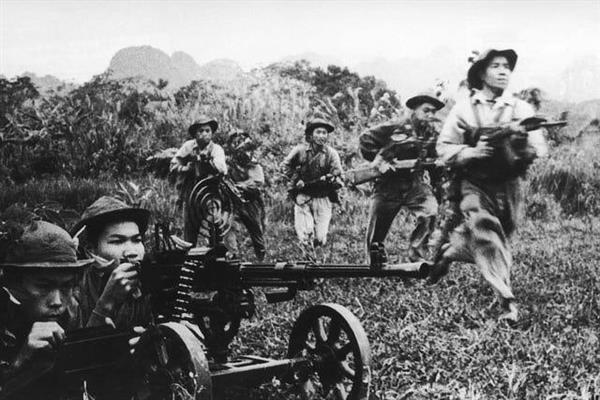
The cloud ceiling in the valley was at 800 feet – better than the previous day – but the visibility also helped the enemy gunners, who were shooting down on the aircraft from the 1,500-foot hillsides. At the besieged camp, the NVA had mounted a ground attack.
With hundreds of NVA in the open surrounding the camp, the A-1s flew three strafing runs, which killed between 300 and 500 of the attackers. The Green Berets later said the attack wiped out a company of the North Vietnamese and took pressure off the fort.
On the first run, King’s aircraft was hit in the cockpit canopy, shattering the plexiglass. He had to break off and go to the nearest base, which was Da Nang. On the second pass, Myers’ airplane was hit by shells of a heavy caliber. His engine conked out and the cockpit filled with smoke. At 400 feet, he was too low to use a parachute.
“I’ve been hit and hit hard,” Myers radioed. “You’re on fire and burning clear back past your tail,” Fisher replied. “Rog,” Myers said. “I’ll have to put her down on the strip.”
Myers’ cockpit was filled with smoke. He couldn’t see, so Fisher talked him down. At the same time, Fisher laid down suppressive fire in front of Myers and gave battle instructions to the other aircraft.
Myers was going too fast to land on the short runway, so he would have to belly slide in. He jettisoned his bombs and retracted his landing gear, but his attempt to release the center line fuel tank failed. The fuel tank exploded on contact with the ground.
Meyers’ plane skidded about 800 feet, trailing fire, then veered off the runway on the west side and exploded. Incredibly, Myers survived. Fisher saw him climb out of his airplane and run to a ditch between the airstrip and the fort, where he was screened by a clump of weeds.
Fisher called in Hague and Lucas to lay down suppressive. The A-1s laid down saturated fire, driving back the NVA troops who were trying to get to Myers. As the A-1Es continued their strikes, Fisher called for a rescue helicopter. Ten minutes later, the command post said the helicopter was at least 20 minutes out. Fisher figured that this was probably a guess. Anyway, it wouldn’t be much longer before the NVA closed in on Myers and killed him.
Fisher knew it was up to him to rescue Myers. But the odds were not in his favor. Even in the best of conditions, it was almost suicidal to land an aircraft as large and slow as the A-1E while exposed to direct enemy fire that would render it defenseless while sitting on the ground. Fisher also noticed the runway looked short so he radioed the command post and asked the length. It was 3,500 feet, he was told. That would be long enough to make the rescue and climb out ofenemy crossfire.
“I’m going in,” Fisher radioed.
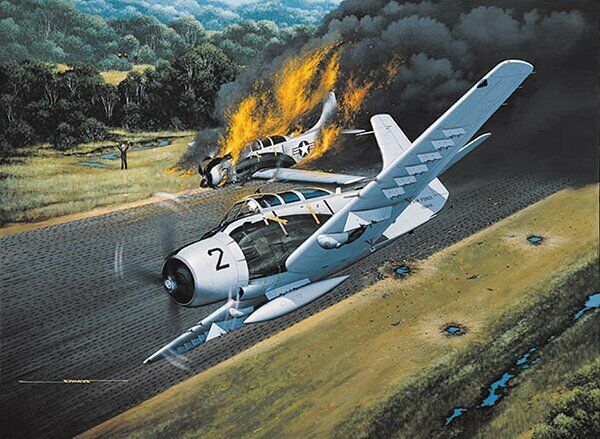
Bernie Fisher Risks Everything in a Daring Rescue Under Fire
The odds of coming out again were not good. He would be landing in a crossfire from 20 anti-aircraft gun positions that lined the valley. The enemy also had hundreds of automatic weapons. The runway was a major hazard. The pierced steel planking was slick, and shards of it – torn by the mortars and bombs – were sticking up and could rip airplane tires to shreds. The runway was cratered and littered with shell casings, pieces of Myers’ aircraft, barrels, pieces of tin and metal, and other debris.
Fisher counted on the other A-1s to provide him fire support. He approached the airstrip from the north, which would give him the advantage of landing into the wind, helping him to slow down. Unfortunately, the wind was also blowing thick smoke from fires ignited by the bombs and napalm in his direction, obscuring his vision. When he broke out of the smoke, he saw that he was over the runway but too far along it to stop the airplane in the distance remaining. As he passed by at low level, he caught a glimpse of Myers.
He powered up, holding the aircraft a few feet above the ground to avoid ground fire, made an S-turn, and approached the runway from the opposite direction of his first attempt.
The other three A-1s put down saturated fire, driving back the NVA troops who were trying to get to Myers. The Green Berets later said the attack wiped out a company of the North Vietnamese and took pressure off the fort.
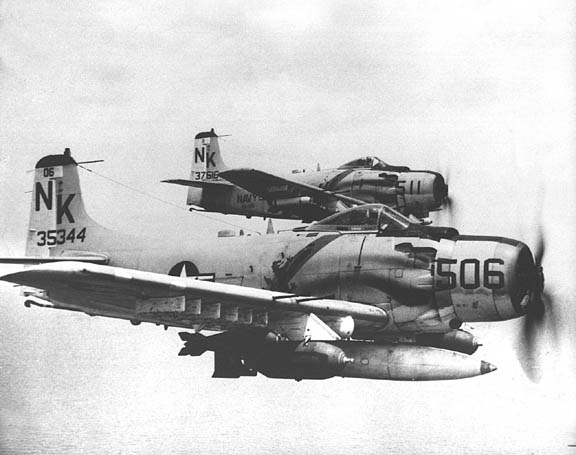
As the A-1Es continued their strikes, Fisher called for a rescue helicopter. Ten minutes later, the command post said the helicopter was at least 20 minutes out. Fisher figured that this was probably a guess. Anyway, it wouldn’t be much longer before the NVA closed in on Myers and killed him.
A moment before Fisher landed, Vazquez went “Winchester” (out of ammo). After three more passes, the other two ran out of ammunition, too. “I’m also Winchester,” Hague declared. “So am I,” said Lucas, adding “Let’s keep making passes, though. Maybe they don’t know it.”
Fisher touched down at the very end of the field, stood on the brakes, and skidded down the runway. His brakes began fading from heat at 2,000 feet. Turns out Fisher had been told wrong about the length of the runway. It was 2,500 feet, not 3,500. It was too short for an A-1 under any circumstances.

He overran the runway onto some grass and crossed a small embankment, which slowed him down a little. As he swung the aircraft around, he slid into a fuel storage area. His wings passed over the tops of some 55-gallon drums, although he hit several of them with the tail of the airplane.
Fisher taxied 1,800 feet back along the runway in full view of the enemy. He saw Myers waving his arms as he passed by. It took Fisher about 100 feet to stop. He couldn’t see Myers, who was running behind the airplane, off to the right side, with bullets following him along. Myers later said it was the fastest dash an old man of 46 ever made. Fisher expected Myers to climb into the cockpit momentarily. When he didn’t, Fisher figured Myers must have been hit. He unbuckled and set the brake to go looking for him.
As Fisher began climbed out on the right side of the airplane, he “saw two little red beady eyes trying to crawl up the back of the wing.” It was Myers, his clothes burned and muddy and his eyes reddened by smoke.
Fisher had left the engine running fairly fast, ready for a quick getaway, and the airflow from the big four-bladed propeller was blowing Myers back as he tried to reach the cockpit. Fisher cut power to idle, risking a stall. As bullets continued to strike the aircraft, he pulled Myers into the cockpit head first.
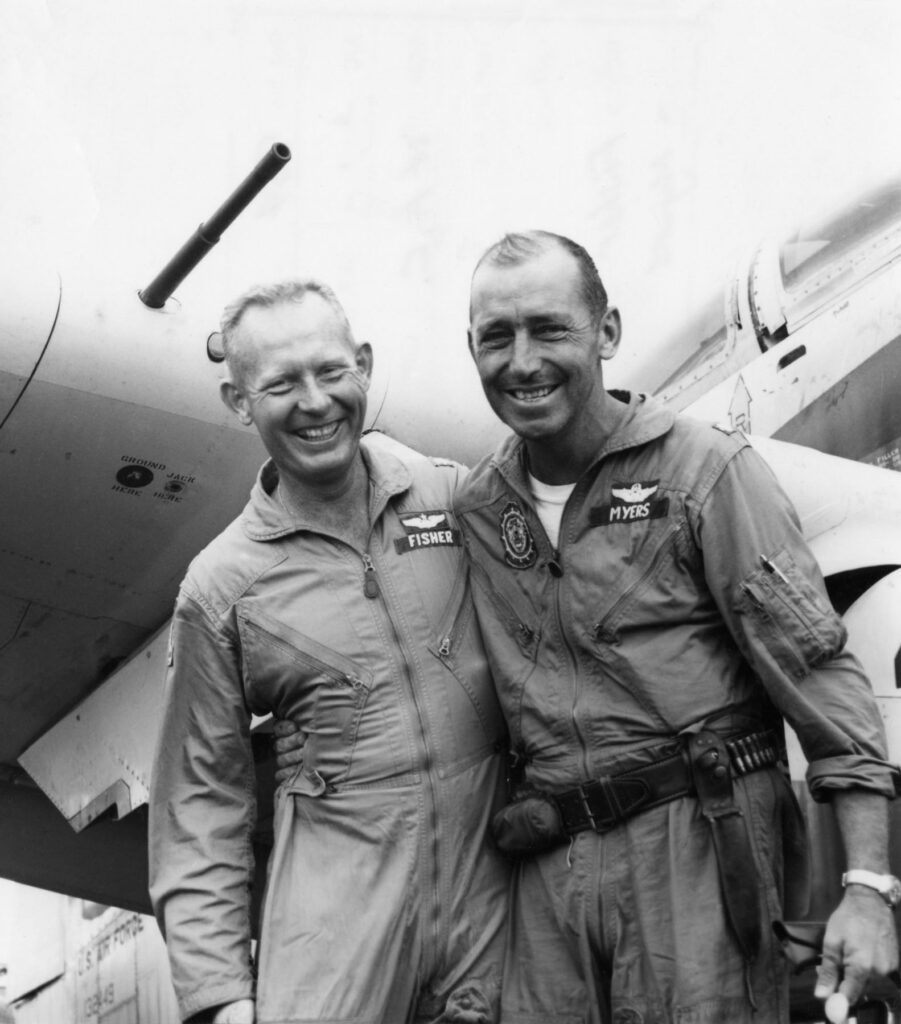
Myers’ first words were: “You dumb son of a bitch, now neither of us will get out of here.” He drank some water from Fisher’s canteen and asked for a cigarette. Fisher, a non-smoker, did not have any.
As Fisher pulled Myers aboard, Lucas – who had taken a severe hit in his hydraulic system – led Hague and Vazquez in a dry pass over the camp one more time. The three Spads went dashing down at low level. It was enough to hold the NVA back momentarily.
Fisher saw that he had less than two-thirds of an already too short airstrip ahead of him so he applied power and worked his way through wreckage and debris, gaining enough speed to lift off at the overrun. Flying just above the ground at insufficient airspeed to climb, he gradually built up speed, still under intense hostile fire, and began a climb into the 800-foot overcast above the valley.
According to one report, the defenders in the fort cheered as Fisher’s A-1 roared down the strip and rose into the air.
Fisher and Myers flew to Pleiku, where the medics met them at the flight line. Myers was not badly hurt, although he was singed and covered in soot and “smelled awful,” according to Fisher.
Fisher’s airplane had 19 holes in it. There were 23 in Vazquez’s.
Bernie Fisher Earns the Medal of Honor for His Heroic Valor
The Special Forces camp in the A Shau Valley fell to the NVA late that afternoon. Air strikes suppressed the attack long enough for rescue helicopters to pick up survivors.
During the battle, the U.S. Special Forces team suffered five killed and twelve wounded (100% casualties). The numbers of South Vietnamese soldiers present at the camp or how many casualties they suffered varies. According to one account, 172 out of 368 Nung and Vietnamese irregulars were flown out, with the others listed as missing, although many of them surfaced later. Another report stated 231 out of 417 irregulars were lost.
The NVA paid a heavy price for its victory. It lost 500 troops to air strikes and another 300 to ground fire.
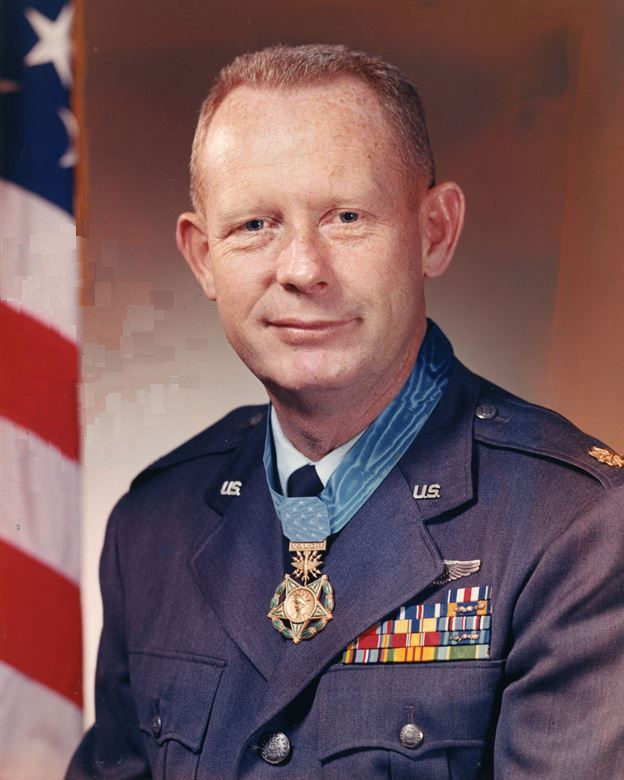
Two hundred and one air strikes were flown in support of the fort on March 10. Of these, 103 were by the Marine Corps, 67 by the Air Force, 19 by the Navy, and 12 by the South Vietnamese Air Force. Including Myers’ A-1E and the gunship, six Air Force, Navy, and Marine Corps aircraft were shot down in the effort.
It was two years before allied forces retook the valley. The NVA established its own camp at A Shau, ringed the valley with anti-aircraft batteries and used it as a staging area and a supply dump. In January 1968, the Tet attacks on the Northern provinces were launched from A Shau.
Fisher was the first person to receive the new U.S. Air Force Medal of Honor. It was presented by President Johnson at the White House, Jan. 19, 1967. His wife, Realla, and their five sons were present for the ceremony.
Myers and Lucas were awarded the Silver Star. Hague and Vazquez received the Distinguished Flying Cross.
The aircraft Fisher flew in the A Shau Valley later crashed and burned at Pleiku as it was returning from a mission. However, it was recovered and restored. In 1967, it was flown by none other than Jump Myers from California to the Air Force Museum in Dayton, Ohio, where it can be seen today.
Bernie Fisher stayed in the Air Force, retiring as a colonel in 1974. Myers died in 1992, but Fisher kept in touch with the others. At a presentation in the Pentagon honoring Fisher in 1999, the attendees included Paco Vazquez, Denny Hague, and Luke Lucas, as well as Gene Deatrick, who was commander of the 1st Air Commando Squadron at Pleiku.
After retirement, he went back to Kuna Idaho and became a farmer, raising seed corn, sugar beets, wheat, and alfalfa. He still lives on the farm but rents most of it out to another farmer. He died Aug. 16, 2014, and was buried at the Idaho State Veterans Cemetery.
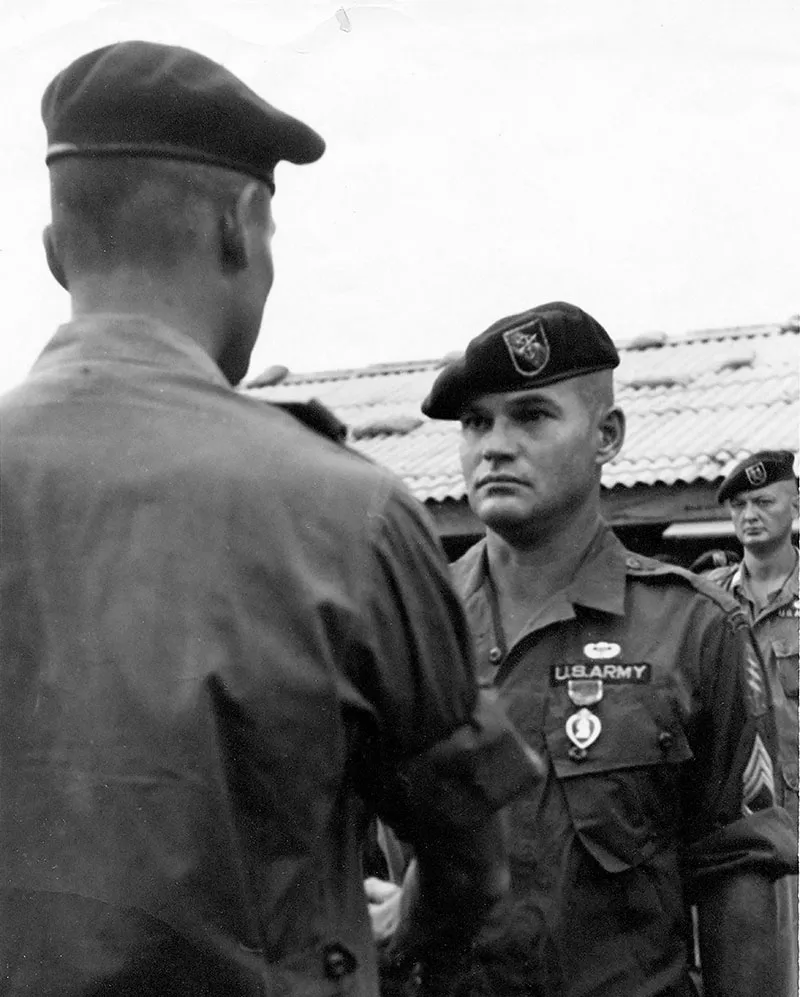
Fisher wasn’t the only hero from the battle. Bennie Adkins of Opelika, Alabama was awarded the Distinguished Service Cross (DSC). Then a 32-year-old sergeant first class, Adkins was among a handful of Americans working with troops of the South Vietnamese Civilian Irregular Defense Group at Camp A Shau when the camp was attacked by a large North Vietnamese and Viet Cong. force on March 9, 1966.
According to his DSC citation, Adkins rushed through intense enemy fire and manned a mortar position defending the camp. He continued to mount a defense even while incurring wounds from several direct hits from enemy mortars. Upon learning that several soldiers were wounded near the center of camp, he temporarily turned the mortar over to another soldier, ran through exploding mortar rounds and dragged several comrades to safety. As the hostile fire subsided, Adkins exposed himself to sporadic sniper fire and carried his wounded comrades to a more secure position.
Later, under enemy fire, some of it coming from South Vietnamese allies who had defected to the North during the battle, Adkins took wounded troops to an airstrip outside the camp for evacuation and drew enemy fire away from the evacuation aircraft. He went outside the camp again to retrieve supplies from an airdrop that fell into a minefield. And that was just day one.
The fighting, and Adkins’ heroism, continued in the early morning of March 10 when the North Vietnamese hit the camp with their main attack.
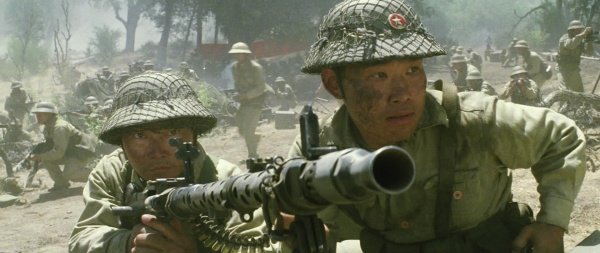
Within two hours, Adkins was the only defender firing a mortar weapon. When all mortar rounds were expended, Adkins began placing effective rifle fire upon the enemy as they infiltrated the camp perimeter and assaulted his position. Despite receiving additional wounds from enemy rounds exploding on his position, Adkins fought off relentless waves of attacking North Vietnamese soldiers.
After falling back to a smaller bunker in Camp A Shau, Adkins killed more enemy troops with small arms fire, destroyed equipment and classified documents to prevent them from getting into North Vietnamese hands, and led a group of soldiers in digging their way out of the rear of the bunker and escaping the besieged camp.
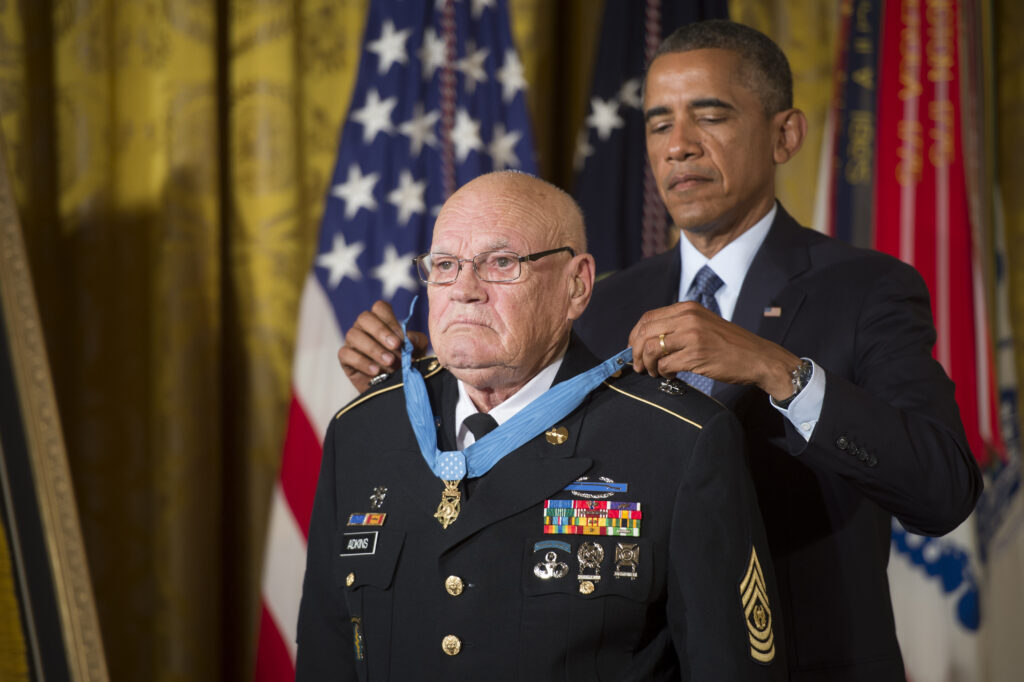
But Adkins’ ordeal was not over. Because he was carrying a wounded comrade, he and his small group couldn’t get to the evacuation helicopters sent to pick up the battle’s survivors, forcing them into the jungle, avoiding their North Vietnamese pursuers for 48 hours.
Helicopters rescued Adkins and the rest of his group on March 12.
Atkins killed 135 to 175 enemy soldiers and suffered 18 wounds during the 86-hour ordeal.
A much later review by the Army’s award branch of retired Sgt. Major Adkins’ Distinguished Service Cross resulted in an upgrade to the Medal of Honor for his actions in defense of the camp. The award was presented by President Barack Obama in September 2014.
Read About Other Profiles in Courage
If you enjoyed learning about Maj Bernie Fisher, we invite you to read about other profiles in courage on our blog. You will also find military book reviews, veterans’ service reflections, famous military units and more on the TogetherWeServed.com blog. If you are a veteran, find your military buddies, view historic boot camp photos, build a printable military service plaque, and more on TogetherWeServed.com today.
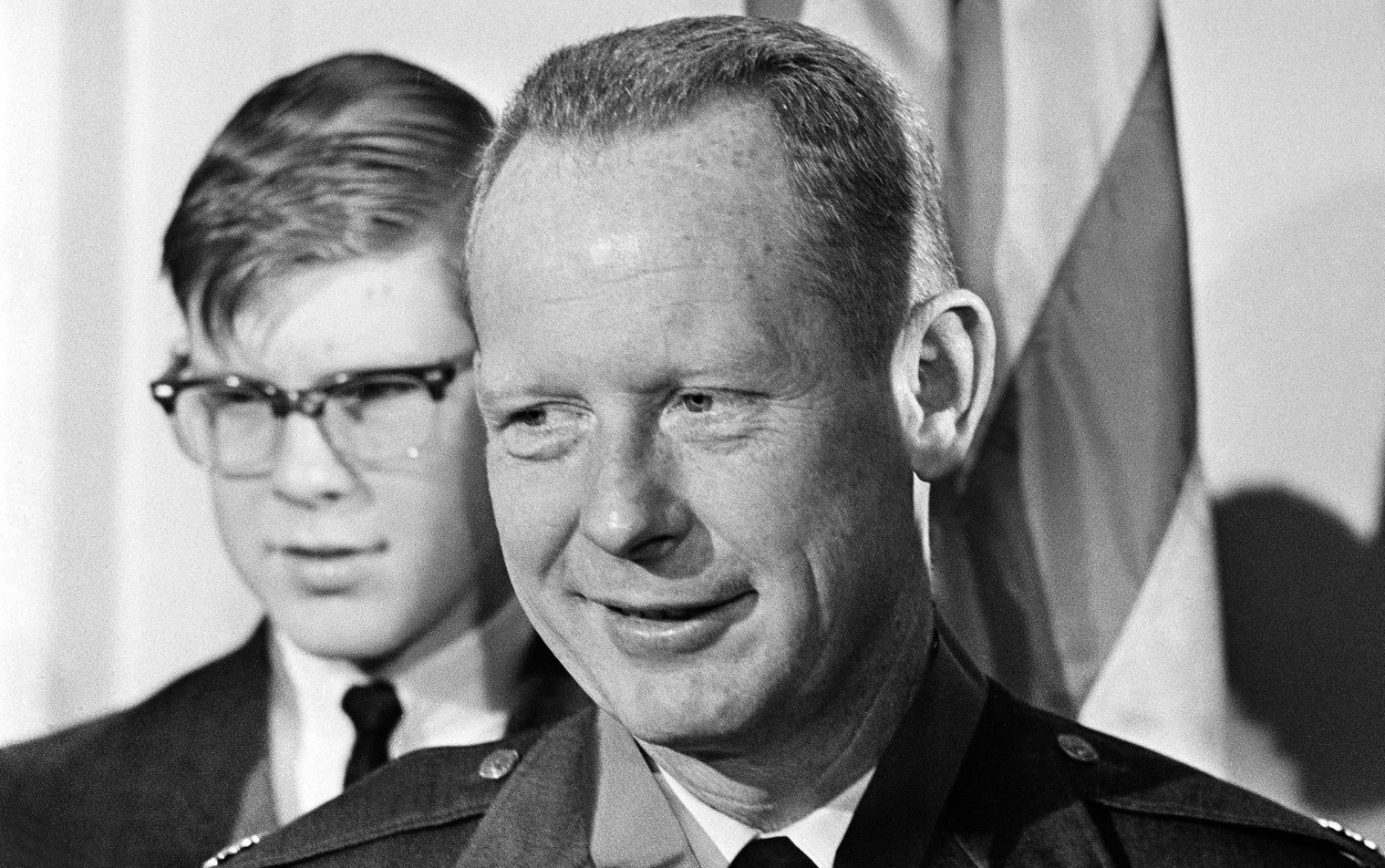
0 Comments